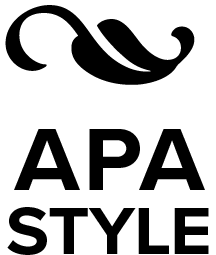Pola Makan Anak Prasekolah Di TK Gayaman Mojoanyar Mojokerto
Abstract
A diet is a way or effort in setting the amount and type of food with a specific purpose such as maintaining the health, nutritional status, prevent or help cure the disease. The purpose of this study was to determine the Diet of Preschool Children at Kindergarten Gayaman Mojoanyar Mojokerto. This type of research used in this research is descriptive. The variables in this study were the children's diet in Kindergarten Gayaman. The population is children in Gayaman Kindergarten in 2014 (25% of the total population. The results of the study on the Diet of Preschool Children explained that more than 50% of the respondents chose to eat 2x1 per day (60%), breakfast from 06-07, 65% respondents choose a regular diet for 4 days> 3 hours, and 30% of respondents often consume fried chicken.The frequency of eating patterns for preschool children is not proportional to the daily calorie needs because adolescents with dense activities really need calories to increase energy. Children really determine the calorie needs in the body Preschool children At Kindergarten Gayaman have a habit of distance between their last eating pattern and sleep> 3 hours, after eating and then sleeping there can be disturbances in the digestive tract. Children can also experience fat accumulation if not accompanied by exercise when finished eating, the diet of preschool children should be done regularly because adolescents are not regular on their diet They tend to experience various comorbidities such as stomach disorders, headaches. And because of that, families should improve the diet of adolescents so they can meet more daily calories
References
Briawan, D& Almatsier, Sztainer. 2004. Strategi Nasional PP-ASI. [online]. www.gizi.net/kebijakan-gizi/download/stanas%20final.doc. diakses, 13Mei 2014.
Depkes R.I. 2004. Sistem Kesehatan Nasional.Jakarta: Departemen Kesehatan RI.
DepkesR.I 2007. Keputusan Menteri Kesehatan RI No.483/Menkes/SK/IV/2007Pedoman Surveilans AFP (Acute Flaccid Paralysis).
Djiwandono, Suroto. 2004. Perkembangan Remaja Masa Kini. (http://repository.usu.ac.id/bitstream/123456789/23074/4/Chapter%20II.pd f diakses 13 Mei 2014)
Efendi, Ferry (2009). Keperawatan Kesehatan Komunitas Teoridan Praktik Dalam Keperawatan. Jakarta : EGC
Hallstrom, Lena. 2011.et all. Breakfast Habits and Factors Influencing Food Choices at Breakfast in Relation to Socio-demographic and Family Factors Among European Adolescents. The HELENA Study.AppetiteVolume 56, Issue 3, June 2011, Pages 649-657. At (http//www.j.appet.com. Diaksestanggal 17 Mei 2014)
Hidayat, Abdul Alimul Aziz. 2007. Metode Penelitian Kebidanan Teknik Analisis Data. Jakarta : Salemba Medika.
Kim, Jeong A. 2007. et all. Dietary Pattern And Metabolic Syndrome In Korean Adolescent. Korean National Health And Nutritional Survey. Diabetes Care.Volume 30. Number 7, July 2007. At (http//www.nutritionj.com Diakses pada tanggal 15 Mei 2014)
Khosman. 2004. Perilaku Kesehatan.
(http//www.nutritionj.com. Diakses pada tanggal 15 Mei 2014) Nursalam. 2008. Konsep dan Penerapan Metodologi Penelitian Ilmu Keperawatan.: Jakarta :Salemba Medika
Notoatmodjo, S .2005. Ilmu Perilaku Kesehatan. Jakarta :Rineka Cipta
Notoatmodjo, S. 2010. Metodologi Penelitian Kesehatan. Jakarta : Rineka Cipta.
Notoatmodjo, S. 2012. Promosi Kesehatan dan Ilmu Perilaku. Jakarta : Rineka Cipta.
Sakamaki, Ruka, Amamoto, Rie, & Yoshie Mochida, Naotaka Shinfuku and KenjiToyama.2011.A comparative Study of Food Habits and Body Shape Perception of University Students in Japan and Korea. Nutrition Journal. 2004. At (http//www.nutritionj.com Diakses pada tanggal 15 Mei 2014)
Suryaputra, Kartika. 2012. Obesitas pada remaja. (http://eprints.uns.ac.id. Diakses 15 Mei 2014)
Suparyanto. 2010. Konsep Dasar Pengetahuan. http://dr.suparyanto.blogspot. com/2010/07/konsep-dasar-pengetahuan diakses tanggal 3 Maret 2014
Supariasa, IDN . 2002. Penilaian Status Gizi .Jakarta : EGC Susilawati. 2013. Gaya HidupRemaja. Jakarta : EGC
Sediaotama, Ahmad Djaeni . 2004. IlmuGizi. Jakarta : Dian Rakyar
Soetijingsih. 2004. Tumbuh Kembang Remaja dan Permasalahannya. Jakarta : Sagung Seto
Oellingrath, Inger M, Martin V Svendsen and Anne Lise Brantsaeter. 2011 Tracking of Eating Patterns and Overweight - a Follow-up Study of Norwegian School Children from Middle Childhood to Early Adolescence.Nutrition Journal. At http//www.nutritionj.com Diakses pada tanggal 15 November 2014
Perry, N Boutelle., Pinem, A Fulkerson., Potter, Mary Story and Simone A French. 2005. Fast food for Family Meals: Relationships With Parent and Adolescent Food Intake, Home Food Availability and Weight Status.
Cambridge Journal online at (http//cambridgejournal.com. Diakses pada tanggal 17 Mei 2014
Yahia, N, Achkar A, Abdallah A, Rizk S. 2011. Eating Habits and Obesity Among Lebanese University Students. Natural Science Division. At (http//www.nutritionj.com Diakses pada tanggal 15 Mei 2014)













